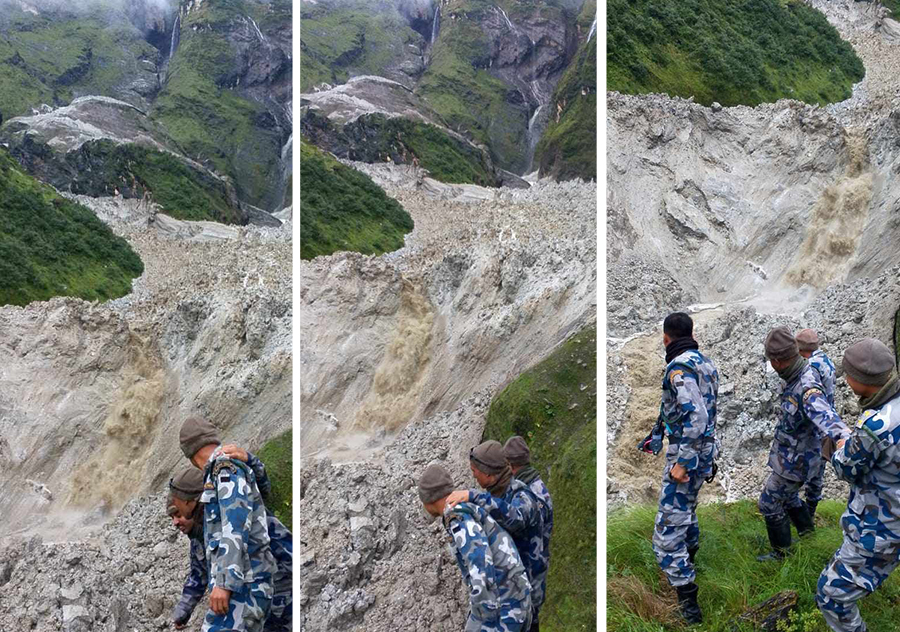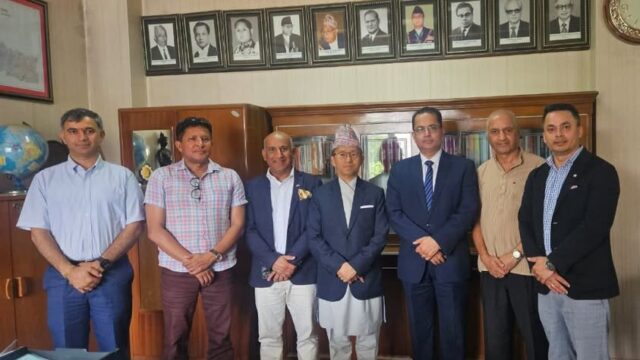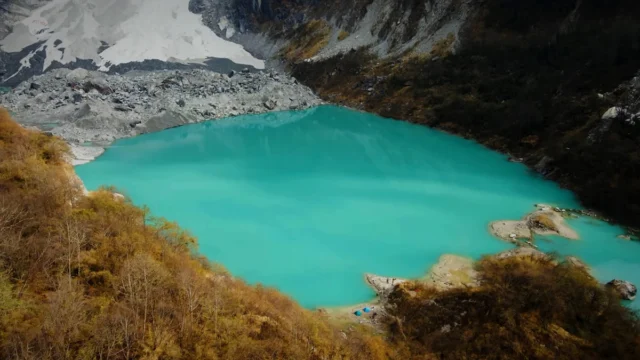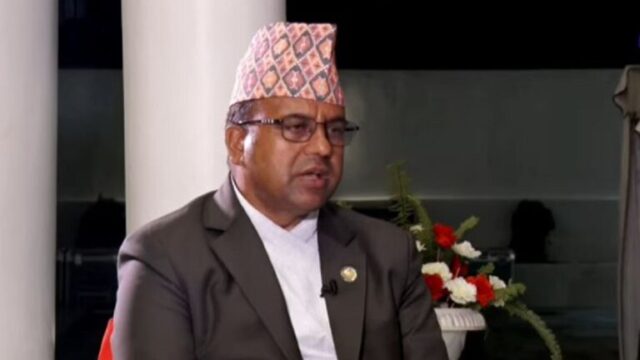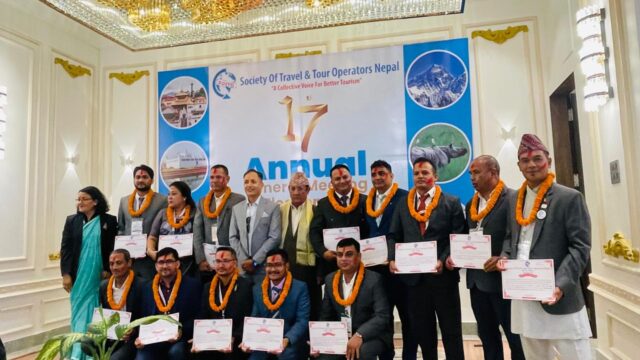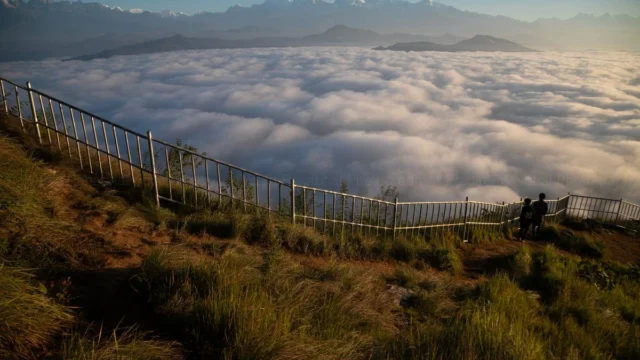Since April, several avalanche incidents have been reported across Mustang, Gorkha, and Solukhumbu. On August 23 and 27, avalanches occurred near Thasang Rural Municipality-2, at the base of Mount Dhaulagiri in Mustang. These avalanches blocked the Ghattikhola River, causing panic among locals. Residents living near the river relocated to safer areas after the incident. Fortunately, as the snow melted and the water flow returned to normal, a major disaster was averted.
Pradeep Gauchan, Chairperson of Thasang Rural Municipality, confirmed that both avalanches originated from the same location. He emphasized that these events are not to be taken lightly, as they are directly linked to the global climate crisis. “A large snow mass blocked the river, raising the risk for lower coastal areas,” Gauchan said. He also noted that a similar avalanche occurred in November 2021 from the Manapathi Himal, affecting the Kobang area of Thasang-2.
In another incident on July 16, an avalanche in Solukhumbu’s Khumbu Pasanglhamu Rural Municipality-5 caused flooding in the Dudh Koshi River, damaging homes and properties in Thame. Fortunately, no human casualties were reported, thanks to swift rescue efforts.
In April, an avalanche at the Birendra Glacier, located at the foot of Manaslu in Gorkha, caused panic among locals as the Budhi Gandaki River swelled due to the runoff. Authorities, from the Ministry of Home Affairs to local ward offices, issued warnings, and experts closely monitored the situation. According to Nima Lama, Chairperson of Chumnubri Rural Municipality, the avalanche caused the water to overflow but did not result in a glacial lake outburst flood (GLOF), which could have led to a more severe disaster.
Experts are increasingly concerned about the growing number of avalanches in the Himalayas, which are often unnoticed. Environmental expert Kulchandra Aryal stressed that Nepal’s Himalayan region is one of the most vulnerable areas to the negative effects of climate change. “The temperature in the Himalayas is rising at a faster rate than the global average,” Aryal noted, adding that as global temperatures increase by 1.5°C, the Himalayas could see an increase of up to 2°C.
Aryal pointed out that the rise in temperatures has led to increased glacial melting, the formation of new glacial lakes, and a higher risk of GLOF events. Recent avalanches, such as the one in Solukhumbu, which caused massive flooding in Thame, are just the beginning of more severe and frequent incidents. Unseasonal heavy rainfall in the Himalayas has exacerbated the situation, leading to landslides and floods, as seen in last year’s incident in Kagbeni, Mustang.
Climate expert Dr. Popular Gentle emphasized the need for better precautionary measures to mitigate these risks. “If we fail to act, the Himalayan region will face unimaginable natural disasters,” Dr. Gentle warned. He also highlighted the importance of protecting glaciers and glacial lakes, as they serve as critical water sources for the region. Despite the Paris Agreement’s goal to limit global temperature rise to 1.5°C, the Himalayas have already surpassed this threshold.
Dr. Gentle advocated for the development of early warning systems and community awareness programs to address the increasing risks posed by glacial lakes. As the temperature continues to rise, the threat to both the upper and lower coastal areas grows, signaling a potential crisis for the Himalayan region.
An international study conducted by the International Centre for Integrated Mountain Development (ICIMOD) and the United Nations Development Programme (UNDP) revealed that 21 glacial lakes in Nepal are currently at risk, with some at high risk of bursting. According to the study, Nepal has 2,086 glacial lakes, and regular monitoring of high-risk lakes is essential to prevent future disasters.
The study cited examples of successful risk mitigation efforts, such as the reduction of water levels at the Tsho Rolpa and Imja lakes in Dolakha and Solukhumbu. However, reducing water levels in glacial lakes is an expensive endeavor, and Dr. Bimal Regmi suggested that the government should collaborate with donor agencies to address this growing crisis.
If current trends continue, Nepal’s glaciers may disappear in a few decades, turning the iconic Himalayan peaks into barren landscapes. Dr. Regmi warned that if global temperatures increase by another two degrees, half of the Himalayan glaciers could be lost.
Climate change is already disrupting the ecological balance in the Himalayas, affecting water cycles, delaying monsoons, and altering snowfall patterns. Dr. Regmi cautioned that the loss of glaciers would severely impact agriculture, livelihoods, and water resources in the lower coastal areas, as rivers dry up and water sources deplete.
The Ministry of Forests and Environment’s study indicates that climate-related losses are already causing a 2.5% annual decline in Nepal’s gross domestic product (GDP), with projections of up to a 12% decline by the end of the century. “Our infrastructure development is not climate-resilient, and the investments are not secure,” Dr. Regmi said. To tackle the climate crisis, Nepal must strengthen its presence on the global stage and advocate for climate justice, he added.
